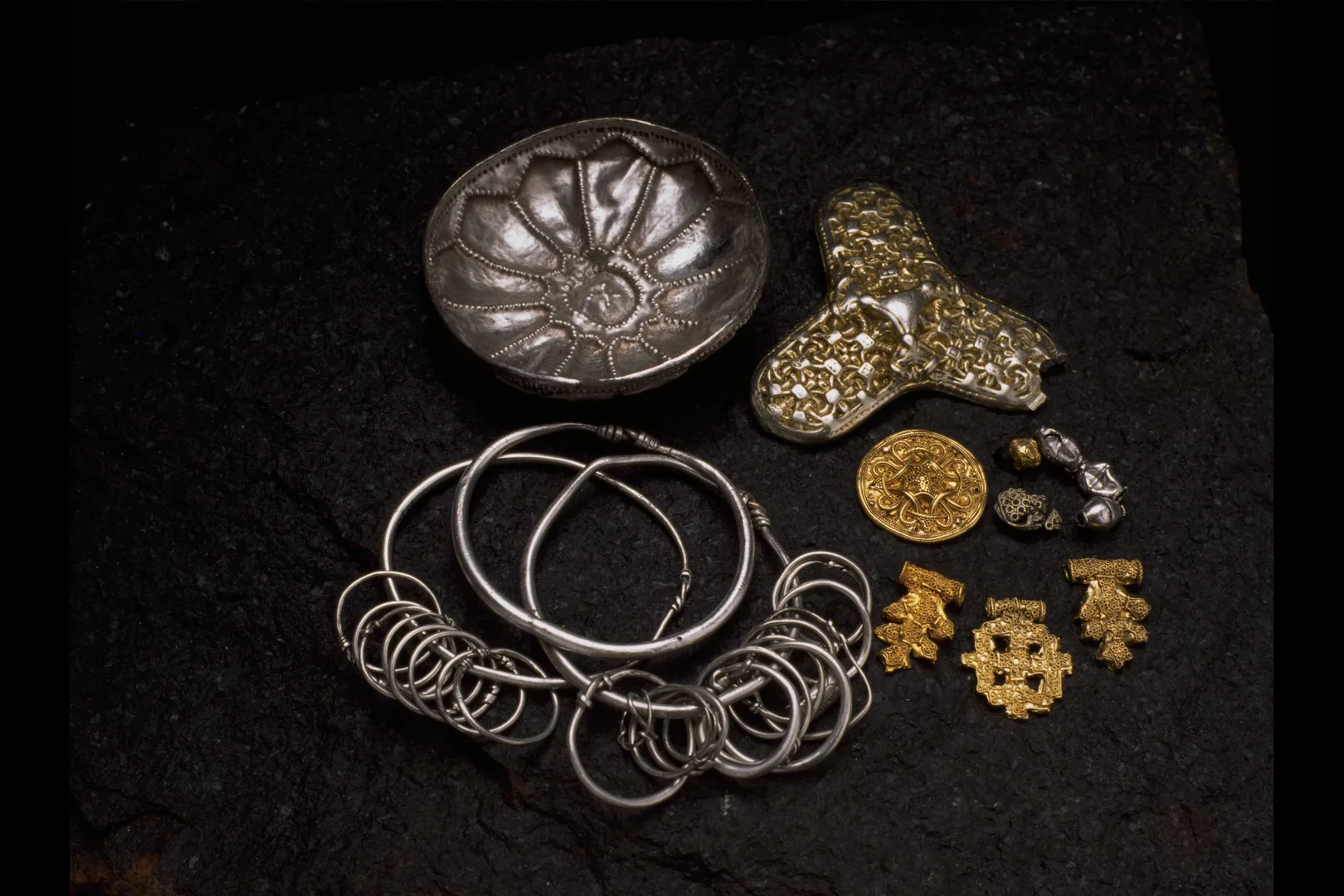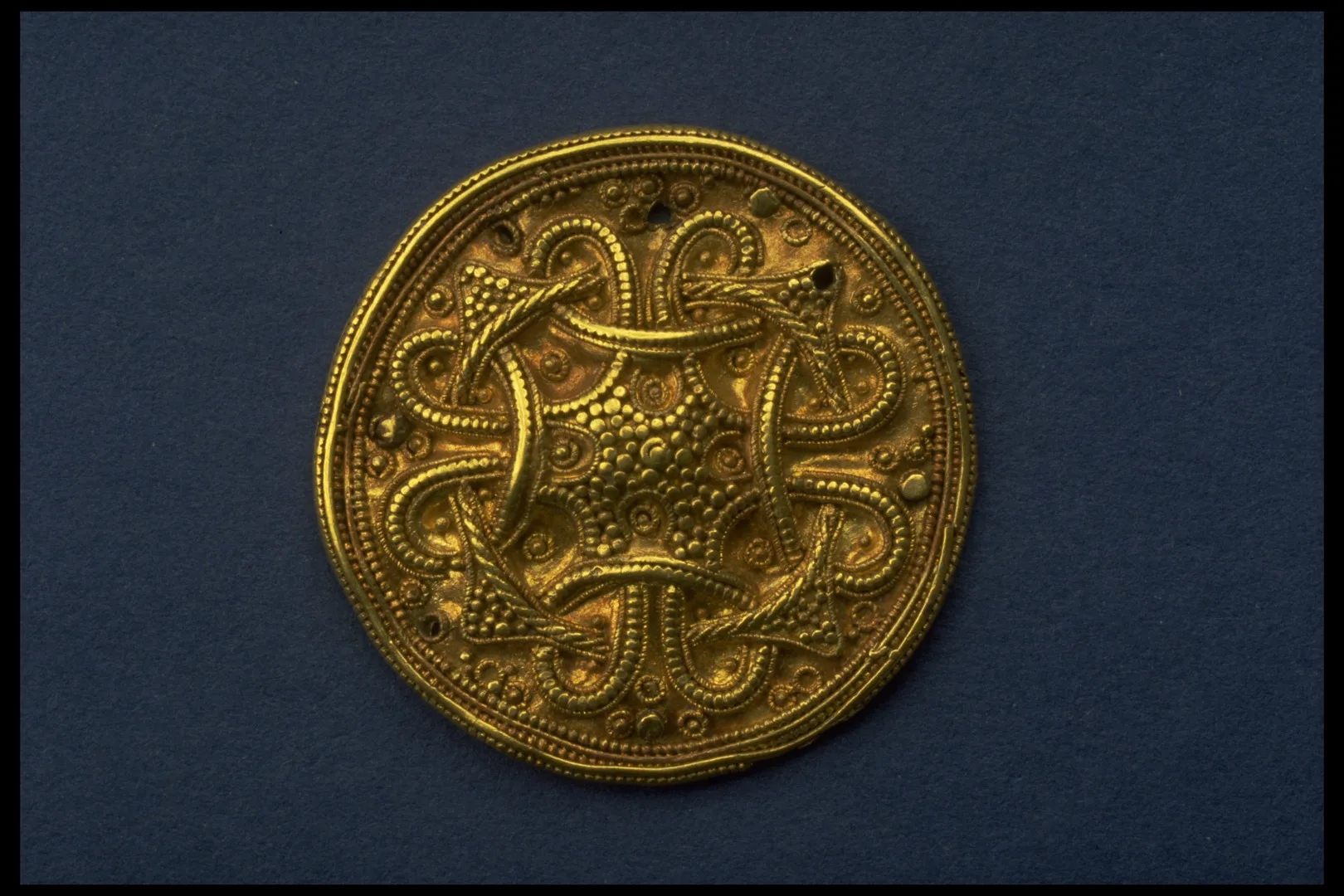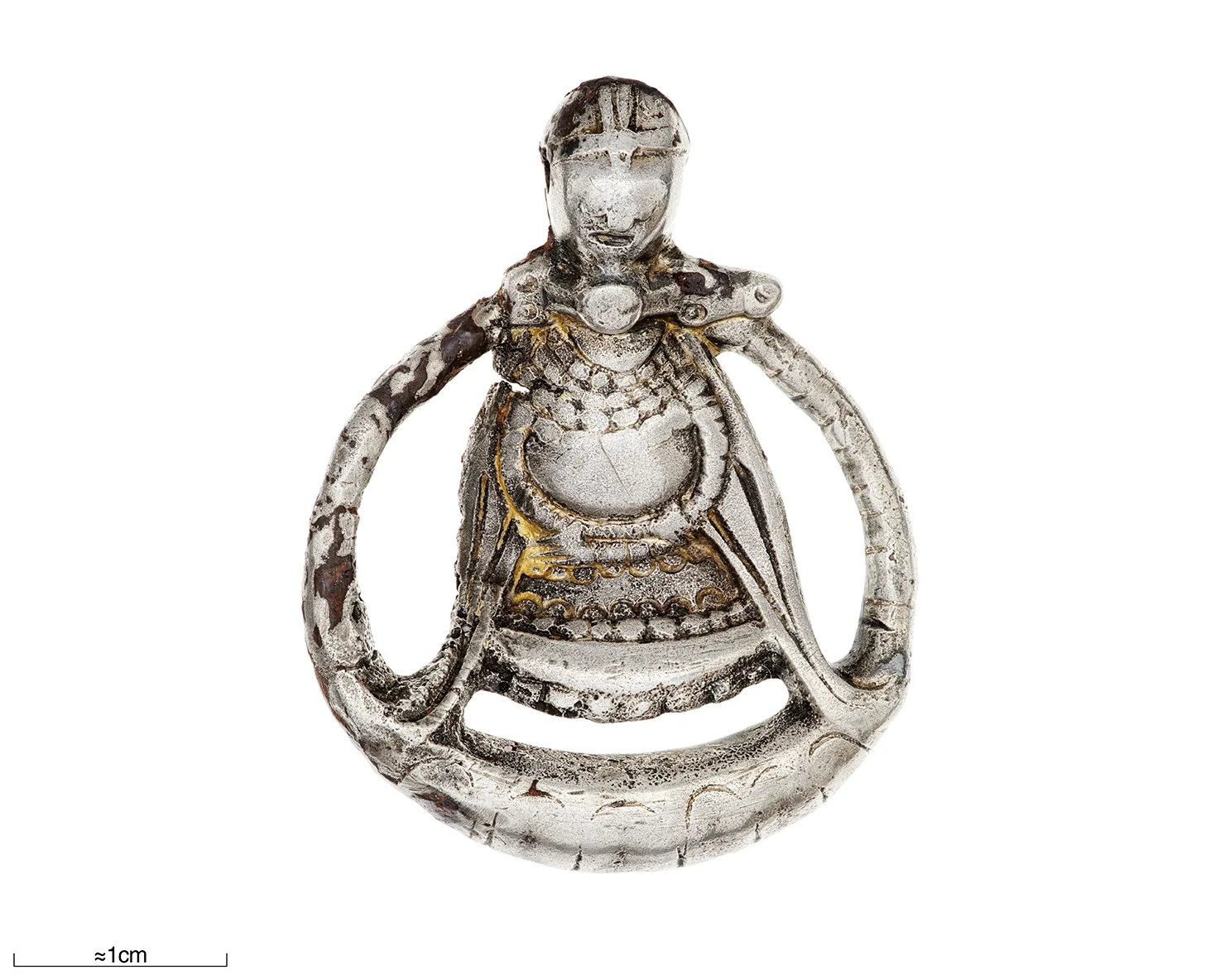The Lackalänga Viking hoard
Iron Age
500 BC – AD 1100
Viking Age
AD 800 – AD 1100
Middle Ages
AD 1050 – AD 1520
Of about 200 Viking Age gold objects found in Sweden, some 30 come from Skåne. The Lackalänga hoard contained a number of gold objects with a total weight of 23.65 grams and silver objects weighing 303.62 grams.

The Lackalänga Viking hoard
On view at Historiska museet in the exhibition Guldrummet
The small, raised silver drinking bowl is one of only three finds of silver bowls in Sweden; fragments of such bowls occur in three further hoards from Skåne. The gilded threefoil silver brooch was originally a fitting for crossed leather straps on a Frankish sword-belt. It later developed into a gilded dress brooch, usually cast in bronze, worn with a woman’s outer garment.
The three arm-rings are typical of southern Scandinavia. They often also carry smaller rings and, as in this case, folded-over coins. It has been wondered whether these were intended to alter the weight. Perhaps they were used as rattles, to make noise and drive away the restless dead who were so greatly feared.
The disc with interlace ornamentation was intended to become a dress brooch but has been pierced for fastening to some unknown base. Around 60 so-called Terslev brooches, usually of silver, are known in the Nordic region.

Gold brooch
On view at Historiska museet in the exhibition Guldrummet
At the trading and craft centre of Hedeby such brooches may have been produced. There, 42 different dies have been found, on which the basic patterns for gold sheet were struck. The filigree ornamentation on the pendants is carried out in the same way as on the gold ornaments from a hoard on the island of Hiddensee, west of Rügen. It is likely that these too were made in the south-western Baltic area during the ninth century.





